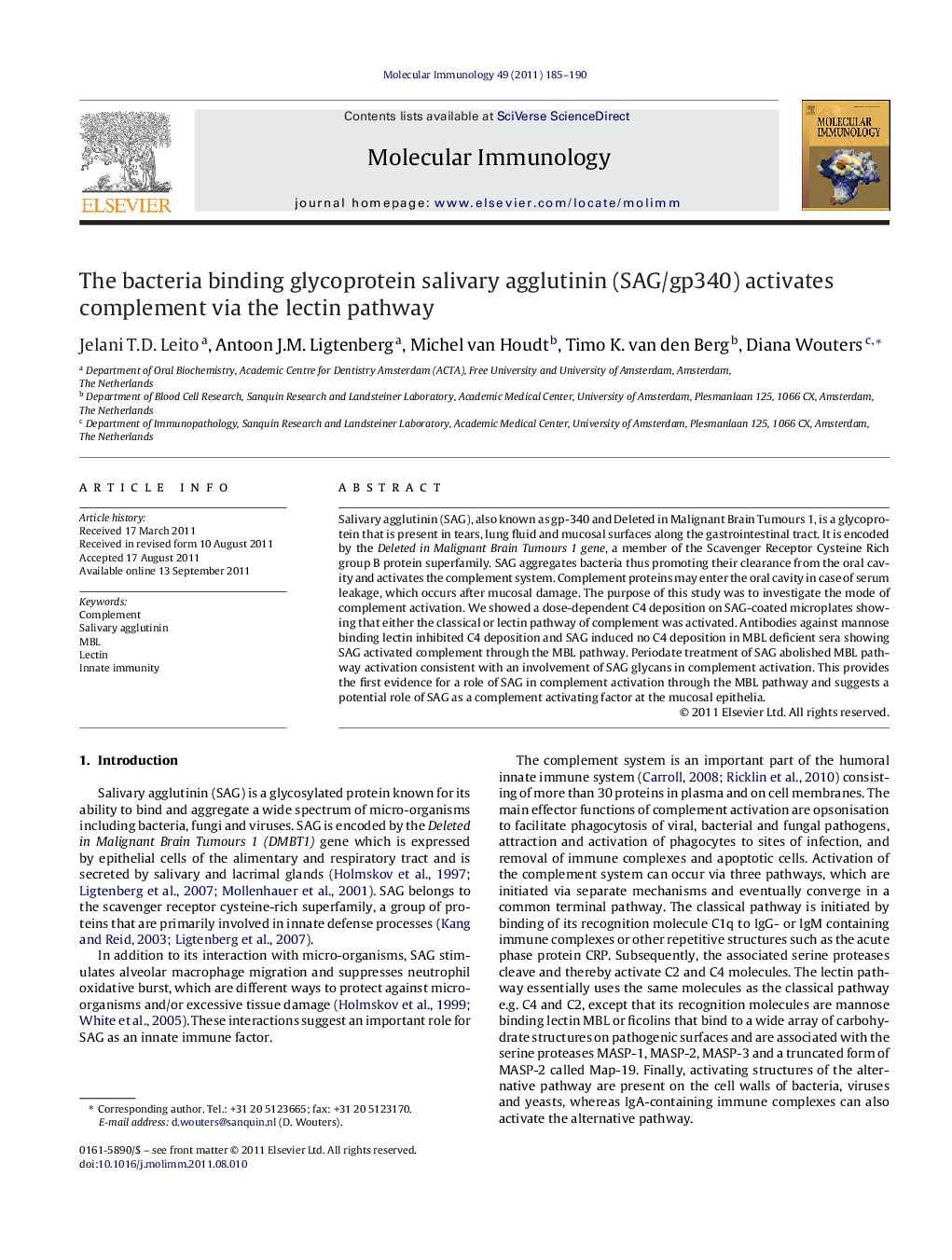| کد مقاله | کد نشریه | سال انتشار | مقاله انگلیسی | نسخه تمام متن |
|---|---|---|---|---|
| 5917466 | 1570734 | 2011 | 6 صفحه PDF | دانلود رایگان |

Salivary agglutinin (SAG), also known as gp-340 and Deleted in Malignant Brain Tumours 1, is a glycoprotein that is present in tears, lung fluid and mucosal surfaces along the gastrointestinal tract. It is encoded by the Deleted in Malignant Brain Tumours 1 gene, a member of the Scavenger Receptor Cysteine Rich group B protein superfamily. SAG aggregates bacteria thus promoting their clearance from the oral cavity and activates the complement system. Complement proteins may enter the oral cavity in case of serum leakage, which occurs after mucosal damage. The purpose of this study was to investigate the mode of complement activation. We showed a dose-dependent C4 deposition on SAG-coated microplates showing that either the classical or lectin pathway of complement was activated. Antibodies against mannose binding lectin inhibited C4 deposition and SAG induced no C4 deposition in MBL deficient sera showing SAG activated complement through the MBL pathway. Periodate treatment of SAG abolished MBL pathway activation consistent with an involvement of SAG glycans in complement activation. This provides the first evidence for a role of SAG in complement activation through the MBL pathway and suggests a potential role of SAG as a complement activating factor at the mucosal epithelia.
⺠Salivary agglutinin (SAG) activates complement via the lectin pathway. ⺠Periodate treatment of SAG abolishes MBL pathway complement activation. ⺠Complement activation by SAG is dependent on glycosylation of SAG.
Journal: Molecular Immunology - Volume 49, Issues 1â2, OctoberâNovember 2011, Pages 185-190